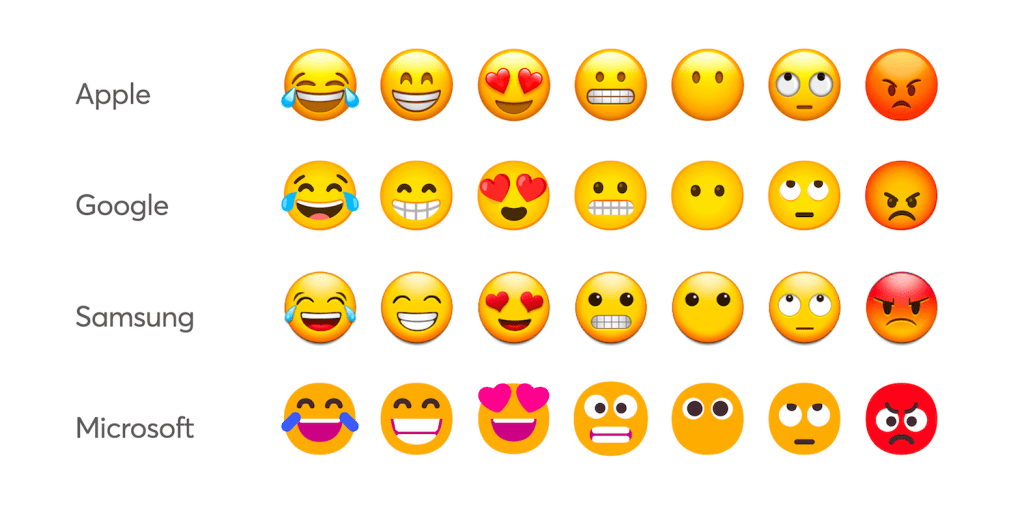Emoji in eDiscovery: What legal professionals need to know

That pondering face. The nauseated face. The laugh so hard you’re crying emoji. While emoji are not a new phenomenon, the rise in distanced collaboration has brought these tiny expressions to a usage all-time high as they provide a new means to communicate and build rapport online. One study even found that three out of four people prefer to send an emoji instead of words when dashing off a quick response. However, emoji usage isn’t the only thing on the rise.
We’re beginning to see an exponential increase in emoji as evidence in court cases. Not only is the need to discover emoji data presenting itself, but courts are increasingly requiring litigants to produce a greater variety of ESI far beyond the emoji — like private channel Slack messages and Zoom meeting recordings. But when it comes to emoji in eDiscovery,capturing this type of data presents unique interpretive and technical challenges every legal professional should be aware of.
The interpretive challenges of emoji ambiguity
Unlike spoken and written communication, drawing meaningful interpretations from emoji remains a challenge. It may not always be clear what a sender is attempting to communicate with their use of emoji, leaving the message open to interpretation by the recipient and in some cases — by the courts.
An example of this open interpretation was found in the 2014 disability discrimination and retaliation case of Apatoff v Munich Re America Services. The use of emoji in email messages between two managers led, in part, to denial of the company’s motion for summary judgment against a claim of wrongful termination. A series of smiley-face emoji found in the emails were determined by the court as reasonable evidence that the managers were happy to terminate the plaintiff.
Understanding emoji ambiguity in context also calls on several other factors, including culture, language, and generation. While the “thumbs-up” emoji may serve as a signal of approval in Western culture, it’s often interpreted as vulgar and offensive in West Africa and the Middle East. Similarly, where the “waving hand” emoji is used to say hello or goodbye in one language, it can signify the ending of a friendship in another. Generation gaps also tend to play a role in interpreting the meaning of emoji, often leading to intergenerational miscommunication.
When it comes to emoji in eDiscovery, context matters (was that a whistle or a kissy face?) Emoji are strong indicators of intent and can represent compelling documentary evidence in court, but often context will only be found in further eDiscovery, which we’ll get into next.
The technical challenges of emoji in eDiscovery
The Unicode Standard currently recognizes nearly 4,000 emoji symbols, but this doesn’t account for platform-specific or custom emoji that apps, like Slack, allow users to create. With 175 apps being the average number deployed by large companies, emoji in eDiscovery can be especially troubling for legal and IT teams who are already tasked with searching for ESI across siloed stores of data.
A further complication to emoji in eDiscovery is how the visualization of emoji renders across different platforms, operating systems, and devices. These rendering implications of the emoji can lead to material alterations to messages and their meaning, or be missing entirely. For example, the same squirt gun emoji on Apple devices, typically depicted as a summertime childhood activity, resembles a revolver when used on LG devices.

And while emoji recognized by the Unicode Consortium provides a code point that allows for accurate rendering across platforms, user-created and platform-specific emoji tend to be based on custom codes. Not only can this alter the visual depiction of the emoji, but without the right technology, this possibly critical piece of evidence can’t be easily categorized or indexed.
A proactive approach to emoji in eDiscovery
It’s safe to say these small but mighty expressions aren’t going away anytime soon— if ever. While much of the interpretive challenge of emoji ambiguity remains unclear, you can get ahead of the curve by focussing on closing two gaps: your technology and the way you use it.
When dealing with emoji in eDiscovery, the right tool will allow you to discover, collect, and preserve emoji data. Solutions with enhanced data granularity offer the ability to filter specific data attributes like date range, user, source code, and even specific emoji skin tones. Not only will having the right tool help legal teams run defensible collections more efficiently but being able to capture emoji in its native format alongside conversational context can pay off tenfold when it comes time to fully decipher its meaning.
Interested in learning how you can discover, search, review, and export emoji data within all your workplace apps in one platform? Get in touch here.
 eDiscovery
eDiscovery Collections
Collections Processing
Processing Early Case Assessment
Early Case Assessment Information Governance
Information Governance Data Migration
Data Migration Data Archiving
Data Archiving Platform Services
Platform Services Connectors
Connectors Platform API
Platform API Pricing Plans
Pricing Plans Professional Services
Professional Services Technical Support
Technical Support Partnerships
Partnerships About us
About us Careers
Careers Newsroom
Newsroom Events
Events Webinars
Webinars OnnAcademy
OnnAcademy Blog
Blog Content Library
Content Library Trust Center
Trust Center Developer Hub
Developer Hub